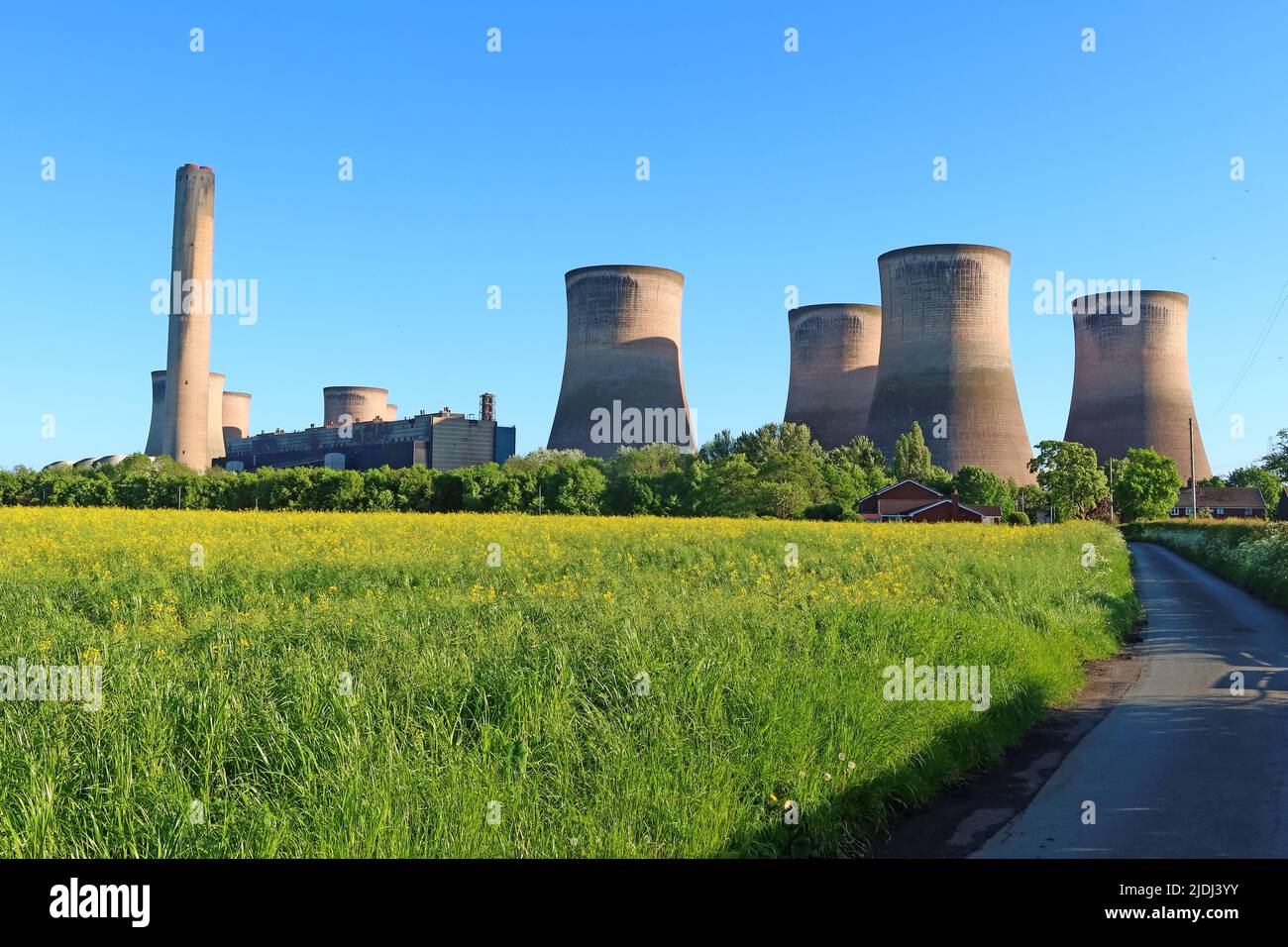Fiddlers Ferry, Coal Fired powerstation, Warrington, Cheshire, UK

Image details
Contributor:
Tony Smith / Alamy Stock PhotoImage ID:
2JDJ3YYFile size:
57.1 MB (2.9 MB Compressed download)Releases:
Model - no | Property - noDo I need a release?Dimensions:
5472 x 3648 px | 46.3 x 30.9 cm | 18.2 x 12.2 inches | 300dpiDate taken:
11 May 2022Location:
Fiddlers Ferry Power Station, Widnes Rd, Cuerdley,Warrington, Cheshire, England, UK, WA5 2UTMore information:
Fiddlers Ferry Power Station is a decommissioned coal fired power station located in Warrington, Cheshire, North-West England. Opened in 1971, the station had a generating capacity of 1, 989 megawatts and took water from the River Mersey. After privatisation in 1990 the station was operated by various companies, and from 2004 by SSE Thermal. The power station closed on 31 March 2020. With its eight 114-metre (374 ft) high cooling towers and 200-metre (660 ft) high chimney the station is a prominent local landmark and can be seen from as far away as the Peak District and the Pennines An application to build Fiddler's Ferry Power Station was proposed in 1962.It was built by the Cleveland Bridge Company between 1964 and 1971, and came into full operation in 1973.There are eight cooling towers arranged in two groups of four located to the north and south of the main building. There is a single chimney located to the east of the main building. One of the station's cooling towers collapsed in high winds on 13 January 1984 and was rebuilt. When it was built, the station mainly burned coal mined in the South Yorkshire Coalfield and transported across the Pennines on the Manchester-Sheffield-Wath electric railway. Later the coal was imported. Between 2006 and 2008 Fiddlers Ferry was fitted with Flue Gas Desulphurisation (FGD) plant to reduce the emissions of sulphur by 94%, meeting the European Large Combustion Plant Directive. In 2010, the station was being considered for the installation of selective catalytic reduction (SCR) equipment. This would reduce the station's emissions of nitrogen oxides, to meet the requirements of the Industrial Emissions (Integrated Pollution Prevention and Control) Directive. The SCR technology would replace the Separated Over Fire Air (SOFA) technology which was used in the station. The SCR equipment was not fitted due to uncertainty over the future of the plant. The station was built by the Central Electricity Generating Board CEGB